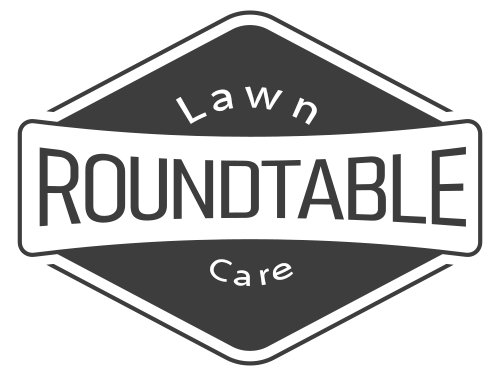Beat the Summer Patch Blues: A Comprehensive Guide to Lawn Recovery

In the summertime, everybody wants to enjoy a lush green lawn they can be proud of. Unfortunately, this dream can be dashed by a common summertime foe: summer patch. This disease can wreak havoc on your lawn, causing unsightly brown or reddish-brown patches that can leave your yard looking anything but pristine.
Summer patch is caused by a combination of factors, including high temperatures, drought stress, and the presence of the fungus Magnaporthe poae. It primarily affects warm-season turfgrasses, such as Bermuda, St. Augustine, and Zoysia. If you start to notice these dreaded patches popping up, don’t panic. With proper identification and the right treatment plan, you can get your lawn looking healthy again in no time. Welcome to your guide for managing summer patch, empowering you with the knowledge to combat this lawn-damaging disease and restore your yard’s beauty.
Summer patch can strike fear into the hearts of lawn enthusiasts, but don’t let this disease get the best of your prized greenery. By understanding its causes, recognizing its symptoms, and implementing effective treatment strategies, you can keep summer patch at bay. This comprehensive guide will equip you with the knowledge you need to care for your lawn and confidently address any summer patch issues that may arise. With a little care and attention, you can maintain a lush, healthy lawn that not only enhances your outdoor space but also provides a source of pride and enjoyment.
Key Insights
- Summer patch is a common lawn disease caused by the fungus Magnaporthe poae.
- Symptoms include irregular brown or reddish-brown patches, wilting, and stunted growth.
- Prevention involves proper mowing, watering, fertilization, and aeration, as well as managing thatch and controlling weeds.
- Treatment options include cultural practices and chemical treatments, such as fungicides.
- Recovery and restoration involve encouraging healthy growth, overseeding affected areas, and optimizing soil conditions.
1. What is Summer Patch?
Summer patch, a common lawn disease, can turn your lush green grass into a patchy, unsightly mess. Caused by the fungus Magnaporthe poae, this disease thrives in warm, humid conditions and primarily affects warm-season turfgrasses like Bermuda, St. Augustine, and Zoysia.
Summer patch typically appears as irregular brown or reddish-brown patches that can range in size from a few inches to several feet in diameter. These patches often have a distinct
2. Symptoms of Summer Patch
Summer patch, a fungal disease that affects warm-season turfgrasses, can cause significant damage to your lawn if not properly identified and treated. Recognizing the telltale signs of summer patch is crucial for taking prompt action and preventing further spread.
One of the most noticeable symptoms of summer patch is the appearance of irregular brown or reddish-brown patches in your lawn. These patches can range in size from a few inches to several feet in diameter and often have a distinct
3. Identifying Summer Patch
Confirming the presence of summer patch in your lawn is crucial for implementing the most effective treatment plan. Several diagnostic techniques can help you accurately identify this fungal disease:
Visual Inspection:
The telltale signs of summer patch, such as irregular brown or reddish-brown patches with a
4. Cultural Practices for Prevention
Preventing summer patch in your lawn is essential for maintaining a healthy, lush green space. Implementing proactive cultural practices can significantly reduce the risk of this fungal disease and keep your lawn looking its best.
Proper Mowing:
Mowing your lawn at the correct height and frequency can help prevent summer patch. Avoid mowing your lawn too short, as this can weaken the grass and make it more susceptible to disease. The ideal mowing height for most warm-season turfgrasses is between 1 and 2 inches. Mow your lawn regularly, but avoid mowing off more than one-third of the grass blade at a time.
Watering:
Watering your lawn deeply and infrequently encourages deep root growth, which helps the grass better withstand drought stress and reduces its susceptibility to summer patch. Water your lawn when the top 2-3 inches of soil feel dry to the touch. Avoid overwatering, as this can create a humid environment that favors fungal growth.
Fertilization:
Fertilizing your lawn according to soil test recommendations can help ensure that your grass has the nutrients it needs to stay healthy and resist disease. Avoid over-fertilizing, as excessive nitrogen can promote lush growth that is more susceptible to summer patch. Choose a fertilizer with a balanced N-P-K ratio and follow the application instructions carefully.
Aeration:
Aeration is the process of creating small holes in the soil to allow water, air, and nutrients to reach the grass roots. Aeration helps reduce soil compaction and improve drainage, which can help prevent summer patch. Aerate your lawn in the spring or fall when the grass is actively growing.
5. Chemical Treatment Options
Chemical treatment options are available to control and manage summer patch outbreaks in your lawn. Fungicides specifically designed to target the Magnaporthe poae fungus can be an effective way to suppress the disease and prevent further spread.
When choosing a fungicide, it’s important to select one that is labeled for use on your specific type of grass and that is effective against summer patch. Always read and follow the product label instructions carefully to ensure proper application and safety.
It’s important to note that chemical treatments should be used as part of an integrated approach to summer patch management. Cultural practices, such as proper mowing, watering, fertilization, and aeration, are essential for creating a healthy lawn that is less susceptible to disease. Chemical treatments can be a valuable tool for controlling outbreaks, but they should not be relied upon as the sole solution.
6. Recovery and Restoration
After treating summer patch in your lawn, it’s important to focus on recovery and restoration to promote healthy growth and prevent the disease from recurring. Here are some key steps to follow:
Encourage Healthy Growth:
Proper lawn care practices, such as regular mowing, watering, and fertilization, are crucial for promoting healthy growth and recovery after summer patch treatment. Ensure that your lawn is receiving adequate nutrients and moisture to support its recovery. Avoid over-fertilizing, as this can lead to lush growth that is more susceptible to disease.
Overseeding Affected Areas:
Overseeding affected areas with disease-resistant grass seed can help thicken the lawn and fill in any bare patches caused by summer patch. Choose a grass seed blend that is suitable for your climate and soil conditions. Before overseeding, remove any dead or diseased grass and loosen the soil to ensure good seed-to-soil contact.
Optimize Soil Conditions:
Improving soil conditions can enhance the overall health and resilience of your lawn, making it less susceptible to disease. Conduct a soil test to determine the pH level and nutrient content of your soil. Amend the soil as needed to adjust the pH level and provide the necessary nutrients for healthy grass growth. Aeration can also be beneficial in improving soil drainage and reducing compaction.
7. Additional Tips for Management
In addition to the core management strategies discussed earlier, several supplemental practices can further enhance your efforts to control and manage summer patch in your lawn:
Manage Thatch:
Excessive thatch buildup can create a favorable environment for summer patch development. Dethatching your lawn can help reduce thatch accumulation and improve soil aeration. Dethatching involves removing the layer of dead and living grass stems that accumulates between the soil and the grass blades.
Control Weeds:
Weeds compete with grass for water, nutrients, and sunlight, making the lawn more susceptible to disease. Regularly controlling weeds through proper mowing, hand-pulling, or using herbicides can help reduce competition and improve the overall health of your lawn.
Seek Professional Advice:
If you’re struggling to manage summer patch on your own, don’t hesitate to seek professional advice from a lawn care specialist or your local cooperative extension office. These experts can provide personalized guidance based on your specific lawn conditions and recommend the most effective treatment strategies.
What are the most common symptoms of summer patch?
The most common symptoms of summer patch include irregular brown or reddish-brown patches in your lawn, wilting and stunted grass blades, and a distinct smoke ring pattern on the affected patches.
How can I prevent summer patch in my lawn?
You can prevent summer patch in your lawn by implementing proper cultural practices such as proper mowing, watering, fertilization, and aeration. Additionally, managing thatch, controlling weeds, and seeking professional advice when necessary can further enhance your prevention efforts.
What is the best way to treat summer patch?
The best way to treat summer patch is to use a combination of cultural practices and chemical treatments. Cultural practices such as proper mowing, watering, and fertilization can help create a healthy lawn that is less susceptible to disease. Chemical treatments, such as fungicides, can be used to control and manage outbreaks.
How long does it take for my lawn to recover from summer patch?
The recovery time for your lawn after summer patch treatment depends on the severity of the outbreak and the effectiveness of your treatment plan. With proper care and management, you can expect your lawn to recover within a few weeks to several months.
Key Insights
| Key Insight | Description | |—|—| | Summer patch is a common lawn disease caused by the fungus Magnaporthe poae. | This fungus thrives in warm, humid conditions and primarily affects warm-season turfgrasses. | | Proper cultural practices can help prevent summer patch. | These practices include proper mowing, watering, fertilization, and aeration. | | Chemical treatments, such as fungicides, can be used to control and manage summer patch outbreaks. | Fungicides should be used as part of an integrated approach to summer patch management. | | Recovery after summer patch treatment involves encouraging healthy growth, overseeding affected areas, and optimizing soil conditions. | Proper lawn care practices and soil management are essential for successful recovery. | | Seeking professional advice can be beneficial for managing summer patch. | Lawn care specialists and cooperative extension offices can provide personalized guidance and recommend effective treatment strategies. |
